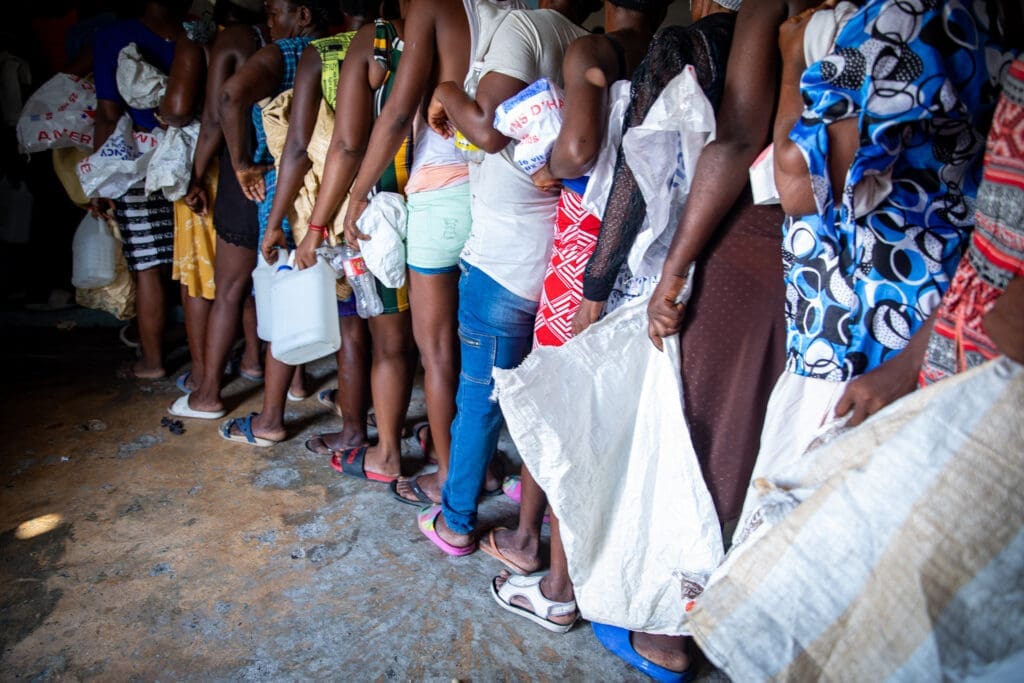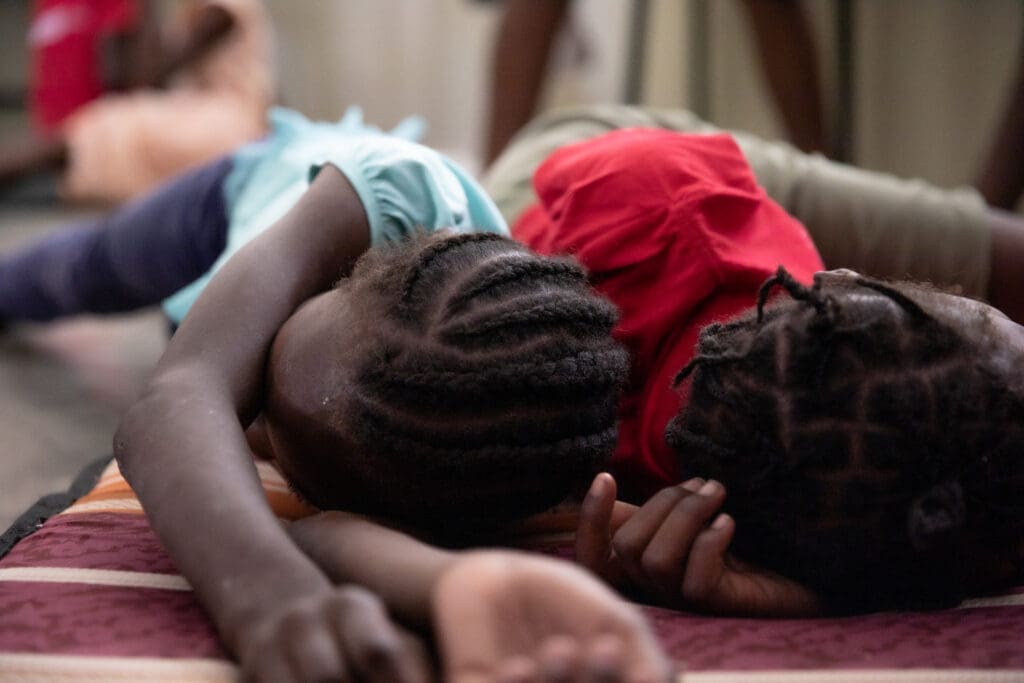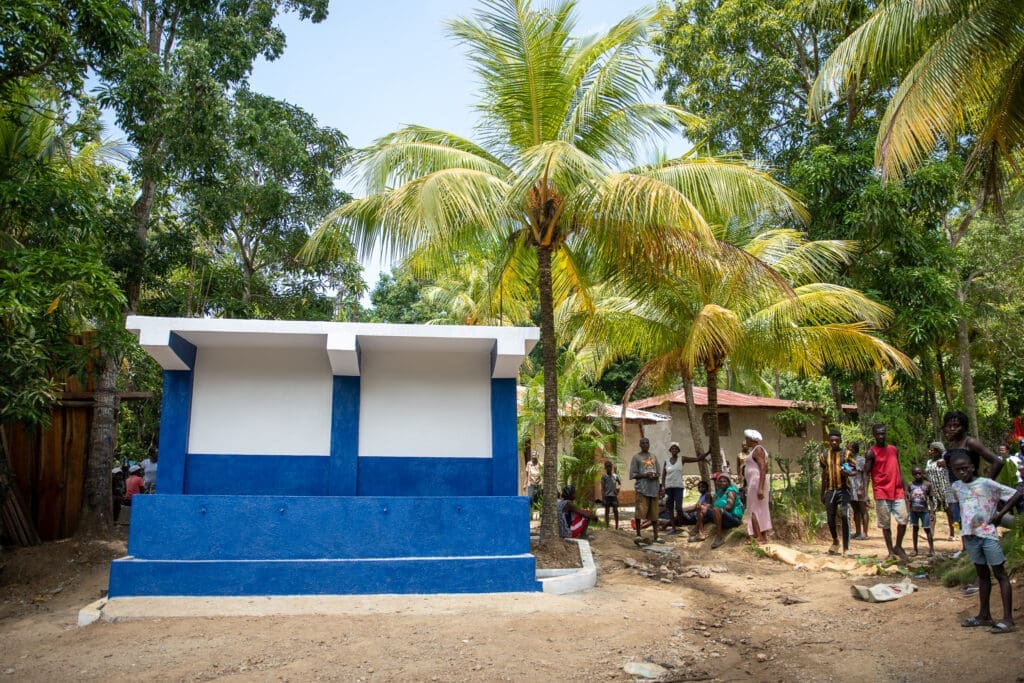What’s Happening in Haiti? Explainer on Gang Violence, Hunger Crisis and Humanitarian Aid to Civilians

Since the start of 2022, attacks and violence by armed gangs across the country have skyrocketed. In fact, in the first four months of 2023, there were more civilians killed in Haiti than in Ukraine.
The result of this violent conflict? Devastating hunger.
“Haiti’s hunger crisis is unseen, unheard and unaddressed,” United Nations World Food Programme (WFP) Executive Director Cindy McCain said. “Violence and climate shocks capture the headlines, but we don’t hear as much about the 4.9 million Haitians struggling to eat day-to-day,” she added.
The situation is dire, but it’s just the latest development in a long, complex history of violence in the disaster-torn country. Why is this all happening? Here’s a brief explanation of what’s going on in Haiti, how the country got to this point and what the U.N. World Food Programme is doing to help the most vulnerable people facing extreme hunger.
Related: 6 Current Conflicts in the World Today and Their Effects on Global Hunger
What Is Going on in Haiti Right Now?
Haitians are facing one of the world’s worst human rights crises in decades. For the past few years, gangs in Haiti’s capital, Port-au-Prince, have fought for control of the major port city. At the beginning of March 2024, gangs attacked two of Haiti’s largest prisons and other critical infrastructure including Haiti’s only international airport.
Civilians are caught in the crossfire of the fighting and are often targets. Adding to the conflict are vigilante groups that have formed to combat the gang violence.
Now the violence is spreading across the country into other cities and rural areas.

The international community is responding. In 2023, the United Nations Security Council passed a resolution authorizing a multinational security mission — led by Kenya’s national police force — to tackle the gang-related violence. It was delayed several times, but the initial deployment of 400 troops arrived in Haiti on June 25, 2024.
Basic Facts About Haiti
Haiti has one of the highest levels of hunger in the world. The number of Haitians experiencing acute food insecurity has tripled since 2016. Today, 4.35 million people are facing extreme hunger – including nearly 1.4 million people on the brink of starvation.
Haiti is also the poorest country in the Latin America and Caribbean region and among the poorest countries in the world. In 2020, nearly 60% of the population was estimated to be living in poverty, and it’s among the 10 countries most affected by food price inflation. Electricity, running water and access to healthcare are all scarce. More than half the population of the impoverished Caribbean nation needs immediate food assistance as hunger ravages communities.
To make matters worse, over the past 20 years, the country has been hit by a succession of severe storms, landslides, drought, earthquakes and hurricanes. These frequent natural disasters have left the country’s infrastructure in shambles and made it nearly impossible for families to grow enough food to feed themselves.
The History and Background of Conflict in Haiti
Haiti became Latin America and the Caribbean’s first independent country in the 19th century. Since then, the country has withstood compounding crises including civil war, natural disasters and disease outbreaks.

Haiti’s current ongoing political turmoil erupted in September 2019 as tens of thousands of Haitians took to the streets demanding the resignation of then President Jovenel Moise. Waves of crime and violence have rocked the country since his assassination in 2021.
In 2024, there has been a significant escalation in violence and protests across Haiti. As armed groups battle for territory – particularly in Port au Prince and Artibonite – civilians have come under attack. January 2024 was the most violent month on record in more than two years, with more than 1,100 people killed, injured or kidnapped.
How Is the Violence Affecting Civilians?
As gang violence spills into rural areas, it disrupts national supply lines of food, water and gas – causing prices to skyrocket.
Thousands of Haitians – over 362,000 – have fled their homes, many setting up homes in makeshift camps only to be forced to flee once violence reaches them once again. The violence also prevents Haitians from leaving their homes or camps in search of basic, life-sustaining supplies. In the Artibonite region, the presence of armed groups has blocked farmers from delivering their produce to the market.
Nearly 5 million people – almost half the population, is facing extreme hunger. This is the highest number since the 2010 earthquake.
The conflict is limiting the humanitarian response: The international community is struggling to reach people affected by the conflict and. In the first part of February 2024, WFP was unable to reach approximately 370,000 of the most vulnerable Haitians due to violence, restrictions on movement and school closures. On May 30, the U.N. World Food Programme was able to land a cargo plane at the airport in Port-Au-Prince for the first time in 3 months, since it had been shut down due to conflict.
What Is Being Done to Help People in Haiti?
Despite layers of growing challenges, the U.N. World Food Programme continues to go where others can’t to save lives in conflict zones like Haiti, delivering food and aid to those who need it most. We’ve worked in the country since 1969 and with sufficient funding and safe access, can ramp up our operations to reach more Haitians in need.

In 2024, we were able to serve over one million people across the country through our food assistance programs. This year, we urgently need funding to reach over 1 million people on the brink of starvation in Haiti. Every day, we continue to support kids in Haiti by providing school meals in over 1,000 schools. Our school meals are Haiti’s largest food safety net.
The skyrocketing gang violence in Haiti is just one of the latest examples of conflict being the number one driver of hunger across the globe. But with your help, we’ll keep showing up where people need us most, delivering aid and support to the most people in places like Haiti.




